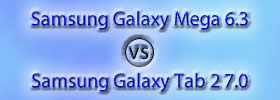Difference between OOP and POP
Key difference: In procedural programming, the programs are executed with functions and the data of the programs can be easily accessed and changed; whereas in object oriented programming, each program is made up of entities called objects, which cannot be easily accessed and changed.
A procedure, or function, is a set of specific instructions executed one after the other. A series of procedures are acted upon the data. The data is quite separate from the procedure, and different programs were created in order to keep track of the functions and the changed data. OOP and POP are two such programs, and this article differentiates between the two.

The term OOP stands for ‘Object Orientated Programming’. It represents the objects that have data fields. Data fields are basically attributes that describe the object. The procedures associated with the objects are known as methods. OOP places the data where it is not directly accessible by the rest of the program. Methods are the only way that this data can be assessed. The objects, which are usually instances of classes, are used to interact with one another to design applications and computer programs. Java is a type of object-oriented programming language.

The term POP stands for ‘Procedural Orientated Programming’. It is derived from structured programming. The procedures simply contain a series of computational steps to be carried out. It creates a step-by-step program that guides the application through a sequence of instructions. Each instruction is executed in order. It is a list or set of instructions telling a computer what to do at each step and how to perform from the first code to the second code. The program is divided into small parts called functions. C and C++ are two types of procedural programming languages.
Comparison between OOP and POP:
|
|
OOP |
POP |
|
Abbreviations |
It stands for ‘Object Orientated Programming’. |
It stands for ‘Procedural Orientated Programming’. |
|
Programs |
The main program is divided into small object depending on the problem. |
The main program is divided into small parts depending on the functions. |
|
Linking |
The functions of the objects are linked with other objects by using the message passing. |
The different parts of the program are connected with each other by parameter passing and using the operating system. |
|
Data |
The data and functions of each individual object act like a single unit. |
Every function contains different data. |
|
Importance |
Data gets more importance than functions in program. |
Functions or algorithms get more importance than data in program. |
|
Data control |
Each object controls its own data. |
Most of the functions use global data. |
|
Transfer |
Data does not possibly transfer from one object to another. |
Same data may be transferable from one function to another. |
|
Data hiding |
Data hiding is possible, which prevents illegal access of the function from outside of it. |
There is no perfect way for data hiding. |
|
Communication |
One object links with the other using the message passing. |
Functions communicate with other functions maintaining as usual rules. |
|
Addition |
More data or functions can be added with the program if necessary. For this purpose, the full program need not be changed. |
More data or functions cannot be added with the program if necessary. For this purpose, the full program needs to be change. |
|
Permission |
Message passing ensures the permission of accessing member of an object from another object. |
To add new data in program, the user should ensure that the function allows it. |
|
Process |
Bottom up process is followed for program design. |
Top down process is followed for program design. |
|
Overloading |
Overloading is possible in the form of Function Overloading and Operator Overloading. |
Overloading is not possible. |
|
Access |
Public, private, and protected access specifiers are used. |
No access specifiers are used. |
|
Examples |
C++, Java. |
Pascal, Fortran |
Image Courtesy: great-white-software.com, fishmoth.wordpress.com









Comments
In "difference between OOP and POP" your "examples" are reversed I believe.
Dave D
Sun, 02/02/2014 - 21:13
Thanks for pointing out, correction is made. :)
dbadmin
Mon, 02/03/2014 - 17:26
Add new comment